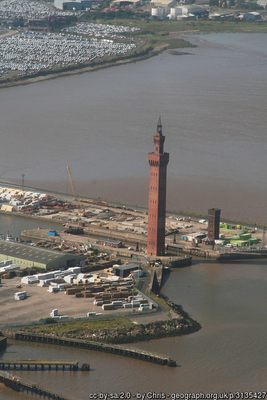About
Inspired by the distinctly less industrial Torre del Mangia in Siena, Italy, this 310-foot high hydraulic accumulator tower was built in 1854 to power the heavy dock gates and cranes of what was once the worlds busiest fishing port.
Designed by architect James William Wild, the industrial icon brings a touch of Tuscan elegance to the otherwise grey and windswept docks of Grimsby on England's Humber Estuary. The slender and emblematic edifice once held an incredible 36,000-gallon tank some 200 feet above ground, pumped from a well 47 feet beneath it. This surprising volume of water provided a head of hydraulic pressure for driving the state of the art industrial apparatus of the port below.
After just 38 years of use, a significantly squatter yet functionally superior weighted hydraulic accumulator replaced this handsome tower. The iconic landmark was spared demolition, despite concerns over it being used as a handy navigation aid by Nazi bombers during the Second World War. The tower has been designated a Grade 1 listed building of exceptional interest by Historic England.
Often mistaken for a lighthouse, the historic hydraulic accumulator is a beloved symbol of this much-maligned metropolitan area. A persistent local legend maintains that the tower was built on foundations made of cotton wool. This slightly terrifying story is merely a tall tale, the tower was built on a conventional footing of brick and concrete. Cotton was once an important export for Grimsby Docks, and it is likely that a misinterpretation of this history has given rise to the implausible legend.
Related Tags
Know Before You Go
Being one of Grimsby's tallest buildings, and North Lincolnshire being notoriously flat, the Dock Tower dominates the skyline for miles around.
Published
June 20, 2019
Sources
- https://en.wikipedia.org/wiki/Grimsby_Dock_Tower
- https://historicengland.org.uk/services-skills/heritage-action-zones/greater-grimsby/
- https://web.archive.org/web/20150402115041/http://www.nelincs.gov.uk/resident/libraries-and-archives/archives--local-and-family-history/local-landmarks-dock-tower/
- https://historicengland.org.uk/listing/the-list/list-entry/1379870






























